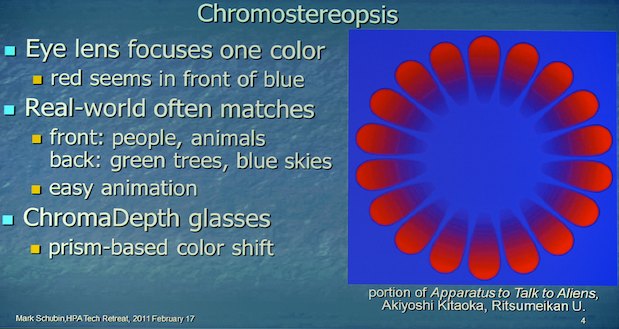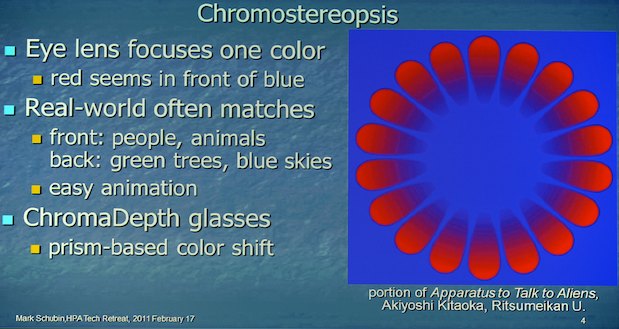
Title: The Intriguing Phenomenon of Chromostereopsis: How Red and Blue Generate 3D Illusion from a Flat Picture
Have you ever gazed at what appears to be a straightforward image—like a red eye paired with a blue iris—and felt a profound sense of depth, as if the colors are somehow hovering at varying levels or shifting positions with your movement? If so, you might have encountered an intriguing visual occurrence called chromostereopsis.
For some individuals, chromostereopsis produces a striking 3D effect from stationary, flat images. Conversely, others may find the image completely ordinary—just two colors sitting next to one another with no perception of depth whatsoever. The variability of this effect is precisely what lends it an air of mystery, and arguably, peculiarity.
What Is Chromostereopsis?
Chromostereopsis is a form of visual illusion where certain colors—predominantly red and blue—seem to exist at different depths, even though they are displayed on a flat surface. This illusion results from the way our visual systems interpret distinct wavelengths of light. Red resides at the longer end of the visible spectrum, while blue occupies a much shorter wavelength. These varying wavelengths are refracted (or bent) in subtly different manners when they enter the eye’s lens, resulting in them focusing at slightly different spots on the retina.
Consequently, your brain perceives these misaligned light signals as originating from different distances. For most individuals, red seems closer than blue. However, some people—such as the author of the initial piece—experience the opposite: blue appears to move forward or red appears to retreat.
Enhancing the Effect
Specific circumstances can amplify or reduce the sense of chromostereopsis. Observing the image in dim light, boosting screen brightness, or rapidly blinking can heighten the perception of depth. As the colors “shift” or “move” slightly when you change your head position, the illusion can seem incredibly vibrant—even though the image itself remains unchanged.
Not Everyone Sees It
What stands out about chromostereopsis is the wide variety of experiences it elicits in different individuals—and for some, there is no experience at all.
Some individuals do not perceive the effect simply due to variations in their eye structure or how their brains process visual information. A vital aspect of the effect stems from binocular vision—how the brain merges images from both eyes. Closing one eye while observing the illusion typically causes the 3D-like depth to vanish, even though you continue to look at the same red and blue image.
This highlights an essential point: chromostereopsis is a genuine stereo illusion. Unlike other visual illusions tied to shape or shading, this one is contingent on binocular cues. Those with a condition known as stereoblindness—where the brain cannot combine visual input from both eyes into a unified three-dimensional perception—do not experience the illusion at all.
The Science Behind It (Still a Bit of a Mystery)
Despite its long-standing reputation within the optical illusion realm, the precise mechanisms underlying chromostereopsis remain inadequately understood. Esteemed vision scientist Michael Bach characterizes the effect as “multi-varied and intricate,” incorporating aspects of optical physics, physiology, and the peculiarities of our visual processing.
Two critical elements contribute:
1. Chromatic Aberration – The eyes’ lenses refract (bend) light colors differently. Red and blue light converge at distinct depths within the eye.
2. Ocular Position (Optical Center Shift) – The fovea (central vision) typically sits slightly off-center to the optical axis in the majority of people’s eyes. Together with chromatic aberration, this influences the perception of depth stemming from color.
Interestingly, the illusion can be heightened or diminished based on the background brightness or the precision of corrective lenses, which can accentuate these optical phenomena.
Historical and Artistic Applications
Artists and designers have often stumbled upon chromostereopsis, possibly intuitively, through the incorporation of vibrant color contrasts in stained glass, painting, or set design. A contemporary illustration is the visual design of the UK television show Have I Got News For You, where contrasting red and blue elements create a deceptive yet compelling sense of depth on screen.
3D Films and Chromostereopsis: A Compare and Contrast
Unlike 3D films—which necessitate glasses that provide a different image to each eye (one filtered via red or polarizing lenses)—chromostereopsis functions without any specialized equipment. However, it similarly relies on binocular vision. The film glasses compel separate images to each eye, which the brain subsequently merges into a 3D understanding. Chromostereopsis achieves a comparable effect simply by using color to deceive the brain into attributing different depths to various regions.
Testing the Illusion
If you wish to fully comprehend whether you are attuned to chromostereopsis:
– Observe a red and blue image (like those illustrated in the article).
– View it in subdued lighting.
– Increase the brightness on your screen.
– Attempt closing one eye.
